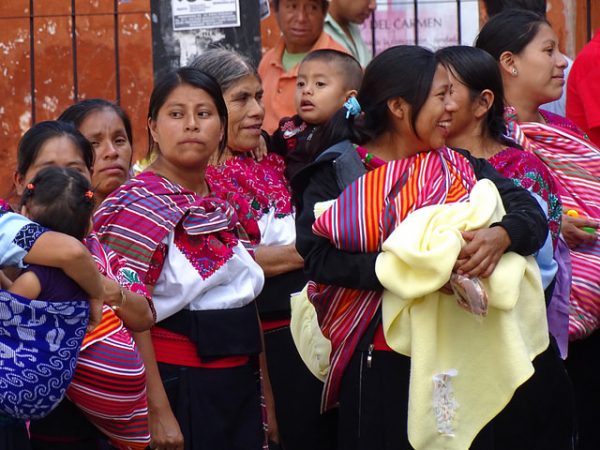
More and more Americans have begun observing Indigenous Peoples Day, at least in part to push back against national narratives of “discovery” associated with Christopher Columbus and his commemoration. While a relatively recent development in the United States, other nations of the Americas officially acknowledged the importance of their Indigenous heritage for much longer. For example, in Mexico, Día de la Raza or “The Day of the Race” was officially recognized back in 1928 and was part of a larger national project that emphasized that all Mexicans share a history of racial and cultural mixing — known as mestizaje — since the coming of the Spanish. Sociological research highlights how this recognition of Indigenous people as integral to the formation of the nation has actually had mixed consequences for Indigenous peoples and cultures of Mexico.
The notion of mestizaje emphasized that all Mexicans were fundamentally “mixed” individuals, or “mestizos.” It was adopted by the State in an effort to promote inclusion and national cohesion across racial lines — including Indigenous peoples — and even resulted in the removal of racial categories from the census (after 1921). In this spirit, the Mexican government sought to “improve” Indigenous individuals through education, social integration, and economic development, assimilating them into the newly defined mestizo nation. While some benefited, some lost their language and cultural identity, and many others, especially those with darker skin, faced further marginalization and found themselves pushed underground.
- Christina A. Sue. 2013. Land of the Cosmic Race: Race Mixture, Racism, and Blackness in Mexico. Oxford University Press.
- Graziella Moraes Silva and Emiko Saldívar. 2018. “Comparing Ideologies of Racial Mixing in Latin America: Brazil And Mexico.” Sociologia & Antropologia 8(2): 427-456.
- Edward Telles. 2014. Pigmentocracies: Ethnicity, Race, and Color in Latin America. The University of North Carolina Press.
Due to internal and external political pressures in the 1990s, the Mexican government abandoned its assimilationist policies and began instead to protect and promote the languages and cultures of Indigenous peoples. These shifts appear to have contributed to greater ethnic pride and greater likelihood to self-identify as Indigenous, especially for more educated, wealthier, or urban populations. However, skin color continues to carry economic and social weight in Mexico. Non-white Mexicans tend to have lower levels of education and employment and are more likely to live in poverty than their lighter-skinned peers.
- Andrés Villarreal. 2010. “Stratification by Skin Color in Contemporary Mexico.” American Sociological Review 75(5): 652-678.
- Andrés Villarreal. 2014. “Ethnic Identification and Its Consequences for Measuring Inequality in Mexico” American Sociological Review 79(4): 775-806.
- René Flores and Edward Telles. 2012. “Social Stratification in Mexico: Disentangling Color, Ethnicity, and Class.” American Sociological Review 77(3): 486-494.
So, while Mexico may still celebrate a day to acknowledge its mixed racial heritage, it is worth wondering if there might be other, better ways to recognize and address the challenges that actual Indigenous people in the country face on a day to day basis.

Comments